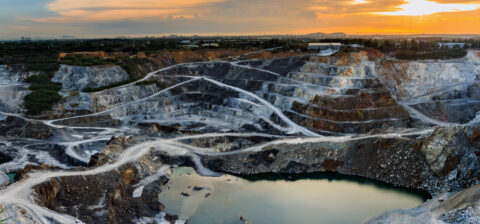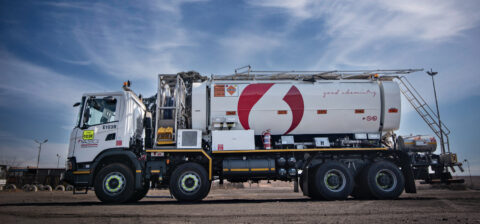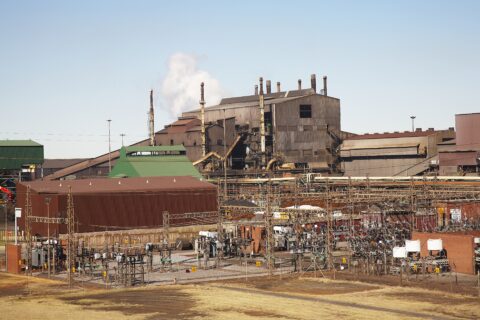SA Mining
The SA Mining Sector’s Continuing Evolution
Over the past three decades of the South African democratic project, the local mining industry has evolved significantly. SA Mining spoke to the Minerals Council South Africa (MCSA) about the huge changes that have occurred in the sector over this period, the challenges that have been faced, and the improvements that can still be made.
According to MCSA CEO Mzila Mthenjane, in the past three decades, the mining industry has fundamentally changed how it engages all stakeholders and conducts its operations.
“These changes have been for the better, especially in the health and safety arena. We have seen improved safety and health performance, and significant and impactful contributions to society from the mining sector. For example, since 1994, the number of fatalities has decreased by 88%, and injuries have decreased by 75%, reflecting our members’ commitment to the safety and health of all employees,” he says.
“Two of the historically leading causes of fatalities, namely falls of ground and transport and machinery, have received unwavering and uncompromising focus from all parties. This includes the MCSA, the leadership teams of its members, and key stakeholders like the Department of Mineral and Petroleum Resources (DMPR), Mine Health and Safety Council, and organised labour. We are all united in our quest for zero harm.”
He points to several interventions that have contributed to a 95% decline in fatalities caused by falls of ground incidents – from 239 in 1994 to just 15 today – indicating that the MCSA’s Fall of Ground Action Plan is delivering the step changes in safety everyone is working towards.
The fight against disease
“Meanwhile, the significant decrease of 91% in transport and machinery fatalities in the past three decades, from a high of 87 to a mere eight, is a direct result of the strong, visible leadership at operations. Significant progress has also been made in reducing the cases of tuberculosis (TB), silicosis, and noise-induced hearing loss.”
For example, at the peak of the TB epidemic in the early 2000s, incidence rates in the mining industry were almost seven times higher than those of the general population, he says. Moreover, in 2003, a total of 8 400 cases of TB were diagnosed in the industry, translating to an incidence rate of 1 928 out of every 100 000 employees.
While the industry’s fight against TB has been a long one, notes Mthenjane, it has also been an encouraging one, with the year 2003 marking a seminal year for the industry, through the establishment of milestones for improving TB.
“In 2014, the Mine Health and Safety Council set its goal as being to achieve a TB incidence rate for the sector below the national average, within 10 years. By 2022, the TB incidence rate was 278 employees for every 100 000 individuals – well below the national rate of 537 individuals for every 100 000 members of the population. This is one of the industry’s major achievements in improving the health of mineworkers over the past three decades.
“We have also made significant inroads in reducing silicosis and noise-induced hearing loss cases, with reductions of 90% and 86%, respectively, between 2003 and 2022. I would like to point out that the CEOs of our member companies have been instrumental in inspiring and driving these safety improvements,” says Mthenjane.
Numerous challenges
Talking to the challenges the sector faces, he adds that on production, the recent performance and the long-term trend for total mining output supports the narrative of an industry in decline.
Between 1994 and 2023, measured in inflation-adjusted (real) terms, mining production declined an average of 0.4% annually. This is overwhelmingly the result of a deep, structural decline in the gold mining industry.
“Since 1994 gold production has shrunk an average 5.8% annually. Put differently, SA went from producing 580 tonnes of gold a year in 1994 to less than 97 tonnes in 2023. A nuanced view of the domestic mining industry needs to strip the collapse in gold output from the overall mining production number. Fortunately, Statistics SA releases the total mining production figure with and without gold,” he says.
“Once gold is removed from the overall number, we find that non-gold mining production actually expanded at an annual average of 1.3% since 1994. This reveals a far better mining sector performance, though it is still only half the 2.6% average growth in non-mining GDP (at basic prices) since 1994.”
Nonetheless, suggests Mthenjane, some mining sub-sectors have achieved stellar growth since 2008, even outpacing the performance in non-mining sectors. Chrome has been the star performer, with output increasing by an annual average of 6.4% since 2008. On average, production of manganese increased 3.9% a year during the same period.
Employment issues
“Employment in the mining sector mirrors production trends. Overall industry employment declined from 611 000 in 1994 to about 480 000 during 2023. Once again, the effect on the gold sector is particularly stark, with employment plunging from 392 000 in 1994 to fewer than 94 000 last year.
“In the non-gold mining sector, employment actually increased, from 219 000 to 386 000 during the corresponding period. Though the job gains in the non-gold sector were unable to compensate for the haemorrhaging in gold, these figures again highlight a more nuanced picture of the mining sector than the general downbeat perception.”
He feels that this overall snapshot speaks to an SA mining industry that has undergone a dramatic transformation, away from gold being dominant, towards a far more diversified sector.
“SA is the world’s leading producer of platinum and chrome, and also produces a range of other minerals, including coal, iron ore, manganese and copper. Mining is far safer than before, and senior management in the industry is notably more diverse along race and gender lines than it was at the dawn of democracy.
“The improvements in health and safety, as well as the investments made in research, development and innovation, have laid the foundation for a long-term South African mining industry.”
The Minerals Council is actively engaging the DMPR on critical minerals and the regulations that govern the mining industry, he adds, highlighting that the need for harmonisation of government departments and regulations pertaining to mining is essential. This will in turn encourage investment in exploration, the construction of new mines and the expansion or life extension of existing operations.
“A functioning, transparent, and effective cadastral system, that can properly manage mineral rights applications digitally and in a timeous and efficient manner, is an essential component of a modern, thriving mining industry.
“Such a system is integral to encouraging greater levels of mining exploration, and if SA is to play its role in the domestic and global critical minerals value chain, exploration will undoubtedly be the critical building block on which we can build the future of mining in the country,” says Mthenjane.







 Sign-up and receive the Business Media MAGS newsletter OR SA Mining newsletter straight to your inbox.
Sign-up and receive the Business Media MAGS newsletter OR SA Mining newsletter straight to your inbox.